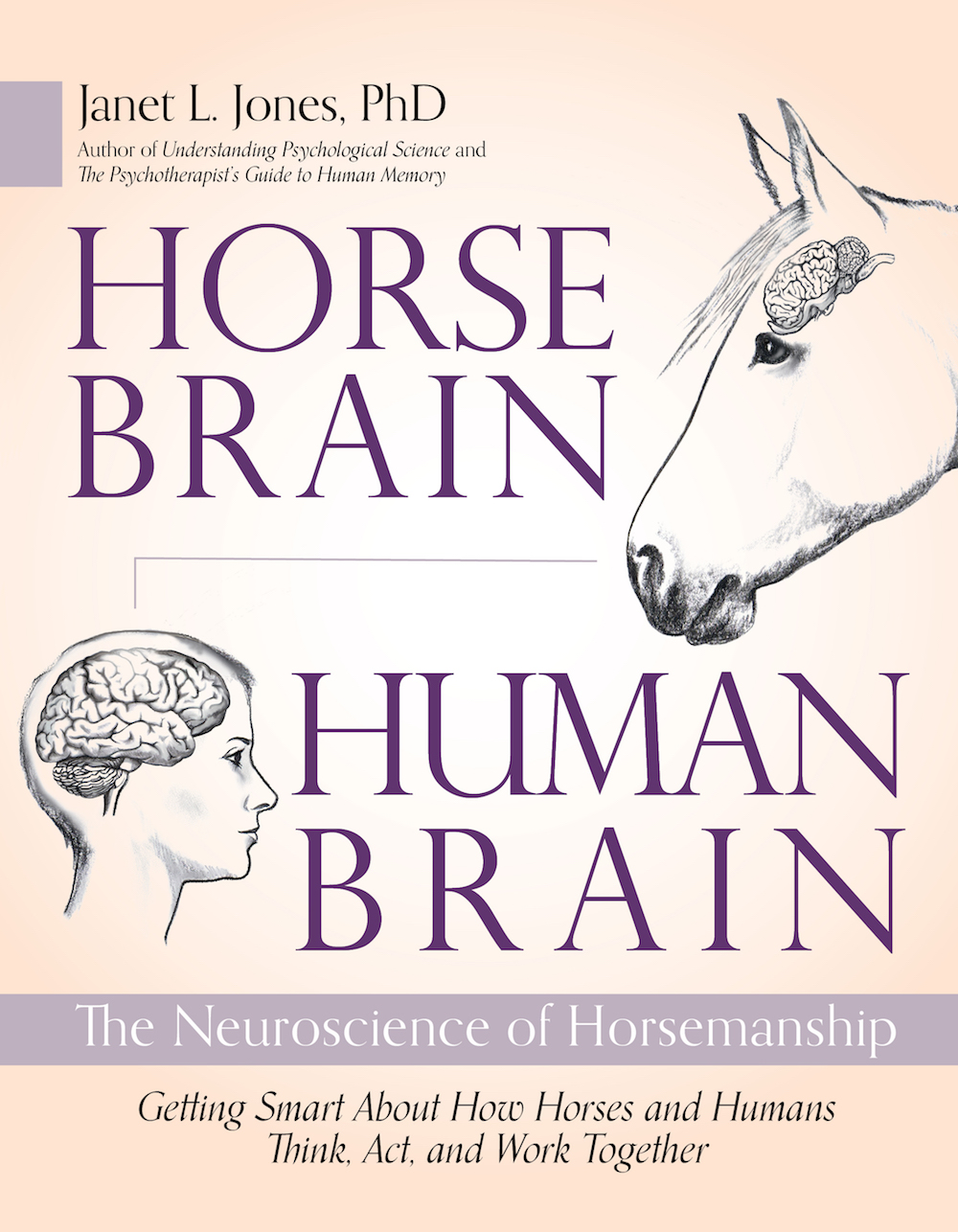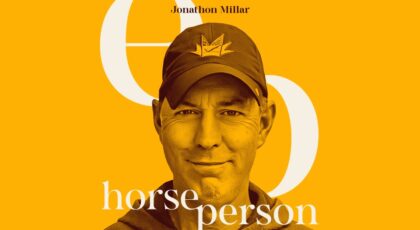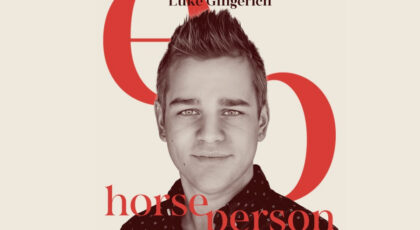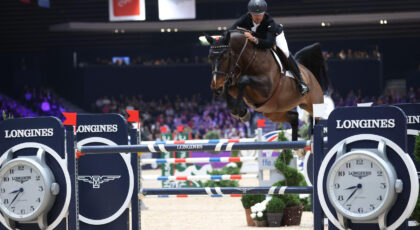True and I have been cantering single and double ground poles lately, as described in the last couple articles.
He is very good now at cantering a single pole, and (hooray) he remains calm and relaxed about it… as long as I do. He is a bit less comfortable cantering over two separated ground poles, but most of the time he does it well. He just needs a little more practice with that.
What’s next? For a horse-and-human team who tends to become nervous, I add standards on either side of the ground pole. The resulting “obstacle” looks like a standard jump, but the pole is still on the ground.
For most horses, this will not be much of an issue. They’ve already trotted low crosspoles with standards on each side. (If your horse hasn’t done that, please go back to my earlier articles in this column before you begin cantering poles.)
When your horse is unconcerned about the standards, begin to raise the ground pole. You can do this with 3” or 6” plastic raisers, with jump cups if your standards have holes drilled that low, or with a stack of three ground poles so that the middle one is raised on top of the other two.
Any of those methods work; the point is simply to raise the pole in small increments.
True canters back and forth over poles raised off the ground by roughly 6” now. I add variety by changing the color of the poles or using a 6″ flower box now and then, so he learns that whatever we approach, we go over… even if it looks odd.
If he is worried about a new color or shape, we walk or trot over it a time or two before returning to the canter.
The feel of cantering over a raised pole should be the same as cantering over a ground pole. The horse doesn’t have to do anything different. We don’t want her to jump higher or wider, or suddenly act as if this is a big new thing.
But here’s where amateur riders’ minds play tricks. We humans know where this little ground pole game is going, even if the horse doesn’t. In coming weeks, that pole will be two feet off the ground, then higher. And some riders get nervous about that from the start.
One of the most common questions I hear at this stage is “How should I teach the horse to leave the ground over the 3” or 6” raised pole at the proper distance?”
My answer: “Don’t.”
It’s not time to worry about distances yet. Just relax your body and mind, canter the horse steadily and rhythmically, focus on keeping yourself and your horse calm and straight. Let him hop this tiny low pole from whatever distance he likes. Sometimes the distance will be awkward. That’s OK. Try not to micro-manage.
I don’t advocate ignoring distances as the poles get higher. But for now, this exercise is easy, and we want to keep it that way.
The horse’s primary lesson is to canter at the same pace and rhythm approaching the pole, going over it, and exiting away from it. His job is simply to cross it as easily as possible in a completely relaxed frame of mind, on a straight line, in the center of the pole.
There’s another reason I recommend ignoring distances for now. Too often, riders tend to shorten a horse’s stride to meet a distance.
It’s easier to ride a short stride to an awkward distance than it is to encourage a green horse to lift off the ground from too far back. And that tendency to shorten causes many green horses to develop a short jumping stride. Basically, it teaches them to get down near the jump, then take one or two little baby strides and chip over the pole. Which is exactly what we do not want when the jumps get higher.
When True canters down and meets the pole at an awkward distance, I just try to remain relaxed. But I don’t reward him for those efforts. Instead, we continue cantering away from the raised pole and, without stopping, canter a large circle to try it again.
We continue cantering until True meets the pole at a good distance. It doesn’t have to be perfect, just adequate. He’s just learning!
I retain a steady balanced half-seat throughout the exercise—it keeps my weight off the horse’s lower back and makes his job easier.
Most riders don’t realize that as little as half an inch of a rider’s seat movement to one side unbalances a beginning horse. He has to compensate for your movement when that happens, landing crooked or on an angle over a straight pole. That can lead to confusion, tension, or injury.
As soon as True meets the pole at a good distance, calm and straight, and hops over without touching it, he gets his non-edible rewards. I praise with my voice and stroke his neck with my hand. We walk on a loose rein, resting for a minute or so, then go back to work.
With two separated ground poles, I leave the first pole on the ground and raise only the second one because that’s easiest for the horse. When True has that down pat, I raise both poles to the 3-6” level.
Anytime he gets nervous or uncoordinated, I back up a step to the exercise that gives him success.
Ground and low raised poles are excellent exercises for the long term—even after a horse is accustomed to jumping 3’ courses—because they reduce concussion on the legs but still allow for practice at approach and exit.
Approach and exit are important aspects of jumping a course. In fact, most of the problems riders and horses experience on course start way back in the corner, or somewhere on the approach and exit. The actual arc of the jump is not usually where a problem resides.
Correcting approaches and exits, keeping the horse straight, centering her jump over the middle of the pole, maintaining her relaxation—all of that can be practiced with ground poles that offer little chance of equine injury.
Take enough time with your horse so that she will never become afraid of jumping. Try to keep each effort a calm positive one, even if it’s not perfect. Horses are easily scared, easily over-faced, when they jump. Add to that the weight of a rider who is perhaps not as balanced as she should be, and the horse has a greater challenge than you might imagine.
Don’t ask for too much too soon.
Related reading:
Brain-Based Horsemanship is a weekly column that chronicles Janet Jones, PhD, and her journey with True, a Dutch Warmblood she trained from age three using neuroscience best practices. Read more about brain-based training in Jones’ award winning book Horse Brain, Human Brain.

A version of this story originally appeared on janet-jones.com. It is reprinted here with permission.




 November 13, 2024
November 13, 2024 




























